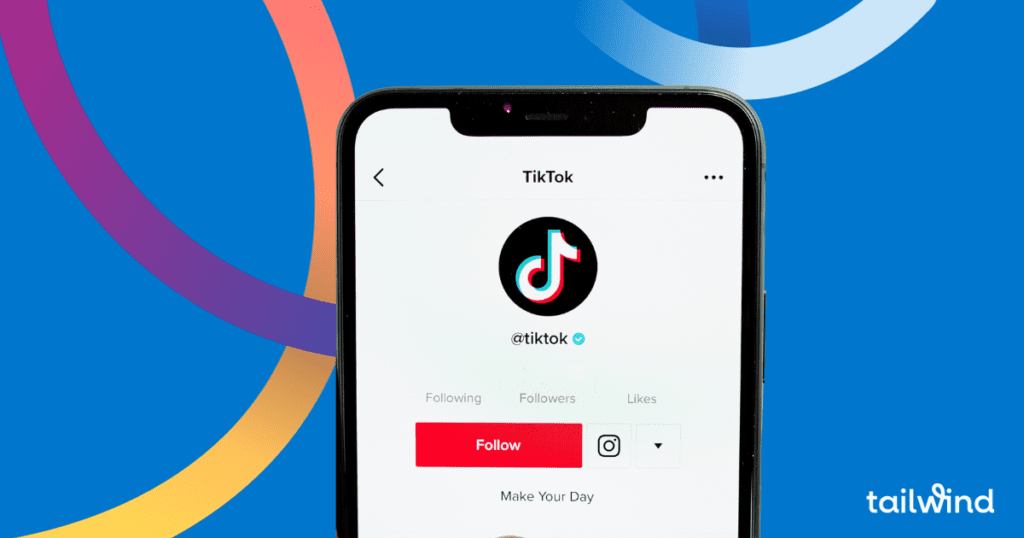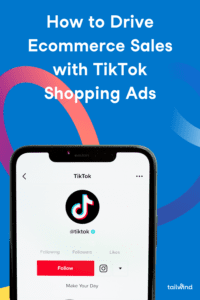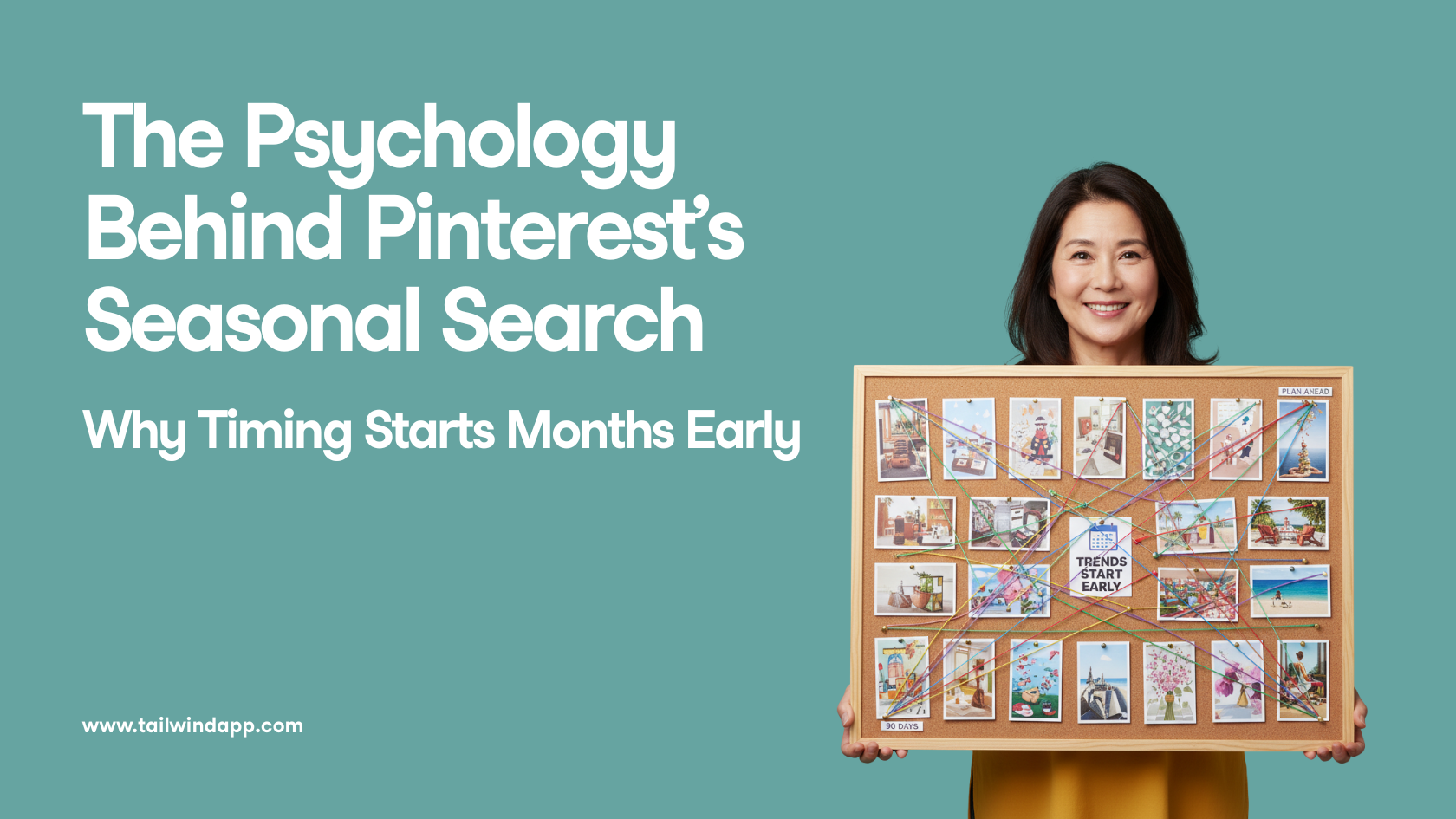
Since its 2014 launch, TikTok has become available in over 160 countries with an estimated 1.7 billion TikTok users averaging 26 hours per month in screen time per user.
Until 2022, in-app advertising on TikTok wasn’t supported on the platform.
But that all changed in 2022 as TikTok continued its push into ecommerce by leveraging the purchasing power of its massive Millennial and Gen Z demographic.
TikTok Shopping Ads for Ecommerce
This culminated with the introduction of TikTok Shopping Ads, an advanced targeting and advertising solution that aimed to streamline the media buying experience on the platform in 2022.
TikTok rolled out three new advertising formats on TikTok Ads Manager, specifically focused on targeting “Product Sales” as the primary buying objective.
The three new ad types include video shopping ads, catalog listing ads, and live shopping ads.
TikTok’s new Video Shopping Ads type supersede Collection Ads and Dynamic Showcase Ads. Catalog listing ads, meanwhile, enable ecommerce brands and advertisers to promote product catalogs with unique placement options across the platform.
All three types feature advanced targeting options that enable ecommerce brands and marketers to reach the massive TikTok audience with more targeting and personalization options to increase the likelihood of getting conversions.
The Rise of TikTok in the Ecommerce Space
TikTok has experienced exponential growth in the past several years, garnering over 3.5 billion downloads across all devices worldwide. It’s second in popularity and downloads only to Facebook — a testament to the platform’s ubiquity and massive potential.
The social media platform, also known as Douyin in China, has exploded in popularity, especially in the 18-39 age demographic globally, with women making up approximately 57% of its users.
TikTok has become the go-to destination for new viral videos, music, and content trends, not to mention hashtag challenges popular with TikTok users.
So, whether you’re an ecommerce business selling fast-moving consumer goods or artisanal products, an influencer monetizing your brand, or an affiliate marketer teaming up with businesses, you’re leaving money on the table by not leveraging TikTok.
TikTok has recognized a shift towards social commerce on the platform, allowing brands and influencers of all sizes to identify new income streams.
TikTok Shop, for instance, enables merchants to sell products directly to TikTok users through live video streams, short-form video content, and profile tabs pointing to product showcases.
One of the best examples of social commerce in full effect is one of the most popular hashtags on TikTok: #tiktokmademebuyit. Since the hashtag’s inception, it has garnered a staggering 65 billion views in all regions. It has since become one of the most used hashtags for merchants, brands, advertisers, and users to identify hot product trends and discover new products.

Setting up TikTok Shopping Ads for Ecommerce
Now that you know about the different types of TikTok ads, let’s take a look at how to set them up from your TikTok ad account:
Step 1: Create your TikTok Ads Manager account
First, create your TikTok Ads Manager account. Fill out the requested information and choose your account type (business/individual). Enter your personal details, create a password, verify your account, agree to the terms of use, and click “Sign Up.” Once approved, log in and complete account setup following the on-screen instructions.
Step 2: Install TikTok Pixel
TikTok Pixel is a code snippet that collects valuable information about your users and data, such as how they found your page, their location, and their browsing device. Complete the setup following the instructions given and then download/copy the TikTok Pixel code and paste it on your site header.
Step 3: Create a Catalog on TikTok Business Center
Navigate to Assets, then Catalog. Initiate the creation process, provide a catalog name, set a default currency, and select a targeting location. This step establishes the foundation for your Video Shopping Ads by creating a central repository for your products.
Step 4: Populate the Catalog with Products
Once your catalog is set up, it’s time to populate it with products. Within your catalog, go to Manage, then click on Products. You can add products by manually filling out forms, scheduling a data feed, or uploading a product template file. Remember, to run a Video Shopping Ad, your catalog should contain at least four active, in-stock products. If you face any issues, get in touch with a TikTok representative.
Step 5: Create your first TikTok Ads campaign
It’s time to create your first TikTok Ads campaign. Go to the “Campaigns” tab and click “Create” to get started. You will also be able to choose a campaign objective depending on your ecommerce brand’s goals.
For instance, your campaign objective could be conversions/sales, depending on the campaign objective you wish to apply. For instance, you can set app installations, sales/conversions, or traffic generation as your campaign goal.
Then, name your campaign and set a minimum budget for it. You can either choose a daily budget or a lifetime budget. A daily budget will help you reach your target audience in a gradual, progressive fashion, whereas a lifetime budget will help you reach as broad of an audience as fast as possible.
Step 6: Create your ad groups
TikTok ad groups define your target audiences, campaign budgets, and ad placements.
Here’s how to set up your first ad group.
- Name your ad group. Choose a name for your ad group.
- Choose your promotion type. App install, website, and video views are among the promotion types you can use.
- Choose your ad placement. This will determine where your ad creatives appear across TikTok and its partners. Selecting “Automatic placement” will have TikTok automatically determine where your ads show up for optimal reach and value for ad spend. TikTok recommends this option if you’re just starting out. Alternatively, you can choose manual placement and be in charge of where your ads are displayed.
- Choose a creative type. Selecting “Automated Creative Optimization” will have TikTok automatically create different variations of your ad creative and track engagement statistics.
- Set your target audience. This is where you set your location, language, gender, and demographic settings. You can also target international audiences by selecting languages and drilling down on granular details such as interests and retargeting users that have interacted with your content in the past.
- Choose a delivery method. Standard delivery will have your ad displayed during the most active times during the ad delivery period you set. Choosing this option also ensures that your ad spend is spread evenly throughout said period. Accelerated delivery, meanwhile, is focused on drawing as many views as fast as possible.
Step 7: Create your ad
Once you get your ad groups up and running, you can proceed to setting up your first TikTok ad.
You can use either product images or video files as your ad. To get the best results, follow the platform’s ad specifications so your ads look and perform their best across TikTok and its partner verticals. Use the preview feature to view your ads as they will appear to users. Refine as necessary before submitting for final review.
Next, customize your ad by naming it for convenience when shuffling through different ad creatives within an ad group. If you wish to add text that will appear above your ad, feel free to do so and stick to 12-100 characters.
Then, add your call to action (CTA). This is the part where you direct your target audience to “Sign Up,” “Buy Now,” “Shop Now,” or “Subscribe,” among other compelling CTAs.
Finally, click on “Submit” to finish the process of creating your ad, which will be subject to final review and approval.
Targeting and Retargeting Strategies on TikTok
Wasted ad impressions are missed opportunities for clicks, conversions, or sales, which is why a solid audience targeting strategy is essential for running an efficient TikTok ads campaign.
Moreover, effective targeting will help you maximize ad spend and reduce acquisition costs over the long run, improving your ROI with more sales. It all hinges on your audience targeting and retargeting strategy.
Here are some of the best ways to tighten up your TikTok ads targeting strategies:
- Leverage existing customer data. Ecommerce businesses are sitting on a goldmine of valuable customer data from their existing customers’ demographic profiles. Knowing key demographic info such as your clients’ ages, gender identities, locations, and languages will help you fine-tune your TikTok ads targeting strategy.
- Use interest and behavioral targeting. Advertisers can target TikTok users based on their interests and hobbies, such as cooking, gaming, personal finance, etc. TikTok can also supply suggestions about related interests for greater ad reach. Behavioral targeting allows advertisers to target users based on their TikTok activity, such as users that create video content, comment on posts, and share related posts.
- Custom Audiences. TikTok Ads Manager allows you to target users that have previously interacted with your brand through a feature called Custom Audiences. This gives you access to potential new customers that are highly likely to convert given their previous interest.
- Lookalike Audiences. Lookalike Audiences help you boost your reach while retaining the quality of your leads by identifying any users that share the same interests to increase the chances of converting.
- Monitor campaign performance. Monitoring campaign data allows you to measure performance. In turn, this will enable you to implement the necessary adjustments to drill down on your best-performing audiences based on empirical data and improve ROI immensely. Feel free to tweak your TikTok ad spend to focus on profitable segments.
- Run A/B tests. TikTok Ads Manager features a Split Testing tool that allows advertisers and brands to set up split tests and track results in real time and test two different variations of ad creatives to determine which version works best for your ecommerce ad campaigns.
Retargeting, on the other hand, refers to how you display ads to individuals who have previously engaged with your TikTok account in a tangible way, such as clicking on an ad or adding one of your products to their shopping cart.
Here are some of the main ways you can retarget audiences on TikTok:
- Ad engagement. Allows you to target custom audiences based on their actions within a set date range.
- Lead generation. Target custom audiences who viewed or completed forms in lead generation ads.
- Website traffic. Target custom audiences based on users that have clicked through or engaged with your website (minimum 1,000 pixel events).
- App activity. Creates a list of users that have downloaded your app or engaged with it (e.g. using a feature, making an in-app purchase).
Optimizing TikTok Shopping Ads for Conversion
Want to optimize your TikTok Shopping Ads for conversion? Here are some best practices to boost sales with video shopping ads:
- Use Product Sales as a campaign objective. Start a new campaign on TikTok Ads Manager and select “Product Sales” as the campaign objective and TikTok Shop as product source.
- TikTok Shop tips. Opt for promoting best-selling TikTok Shop stock keeping units to increase conversions and gross merchandise value. Mix and match new products with best-selling products to generate greater exposure to the former. Also try marketing low and high-priced items to see what works best for your store.
- Structure your ad groups for optimal performance. Create different ad groups based on different product types and audience targeting strategies. Using the same product images, creatives, and targeting for ad groups may lead to poor performance.
- Use a variety of ad creatives. TikTok recommends having around 3-5 ad creatives per ad group at a minimum. Always ensure that the creatives match the products you advertise on your TikTok Shop. Use a range of product anchor links and product card formats for a better customer journey, and create artificial urgency by using limited time promotions.
- Use GMV or Purchases as optimization objectives. TikTok Ads Manager allows you to optimize ad content for gross merchandise value and cost per action (CPA) for various cases. Feel free to refine your optimization objectives to see which one performs best.
Integrating TikTok Shopping Ads with Ecommerce platforms
Lastly, as social commerce has taken the world by storm, ecommerce brands are looking to TikTok to leverage the boom. TikTok has responded by developing a robust ecosystem for native shopping and ecommerce platform integrations so brands can seamlessly sell on the platform.
TikTok has developed its own E-Commerce Platform Integration solution, allowing merchants on a variety of ecommerce platforms to use TikTok as a sales and advertising vertical.
The integration streamlines the tedious process of having to create and link their TikTok for Business and TikTok Ads Manager accounts, as well as syncing product catalogs and installing TikTok Pixel.
Moreover, the integration enables ecommerce brands to moderate the friction for the transition of users/followers into customers.
The following ecommerce platforms are supported, all of which have detailed integration guides and FAQs from TikTok:
- BASE
- BigCommerce
- Cafe24
- Ecwid
- Haravan
- Kyte
- Loja Integrada
- Nuvemshop
- OpenCart
- PrestaShop
- Salesforce Commerce Cloud
- Shopify
- Shopline
- Square
- TRAY
- VTEX
- WooCommerce







